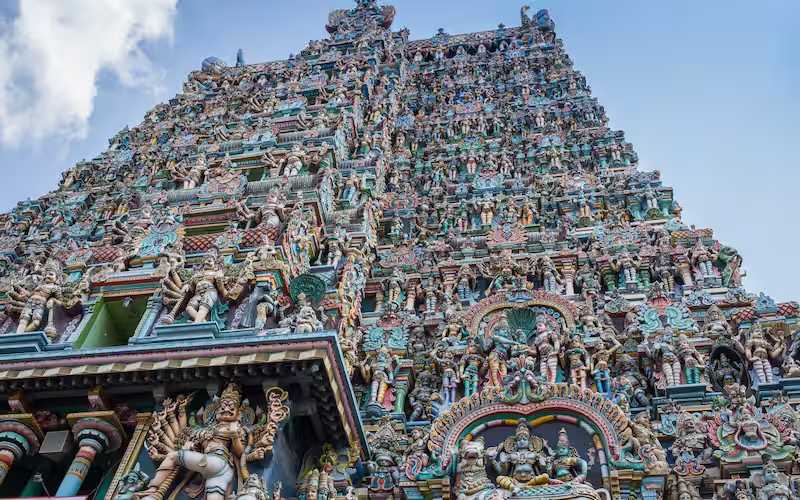When you think of Madurai, the first image that comes to mind is the towering gopurams of the Meenakshi Amman Temple, decorated with thousands of brightly painted sculptures. The temple isn’t just a religious site—it is the very heartbeat of the city. Located on the banks of the Vaigai River in Tamil Nadu, this ancient complex has stood tall for centuries, drawing pilgrims, historians, artists, and curious travelers from across the globe.
It’s not an exaggeration to say that the Meenakshi Temple Madurai is more than a place of worship. It is a city within a city, a vibrant cultural hub where spirituality blends with art, festivals, and everyday life.
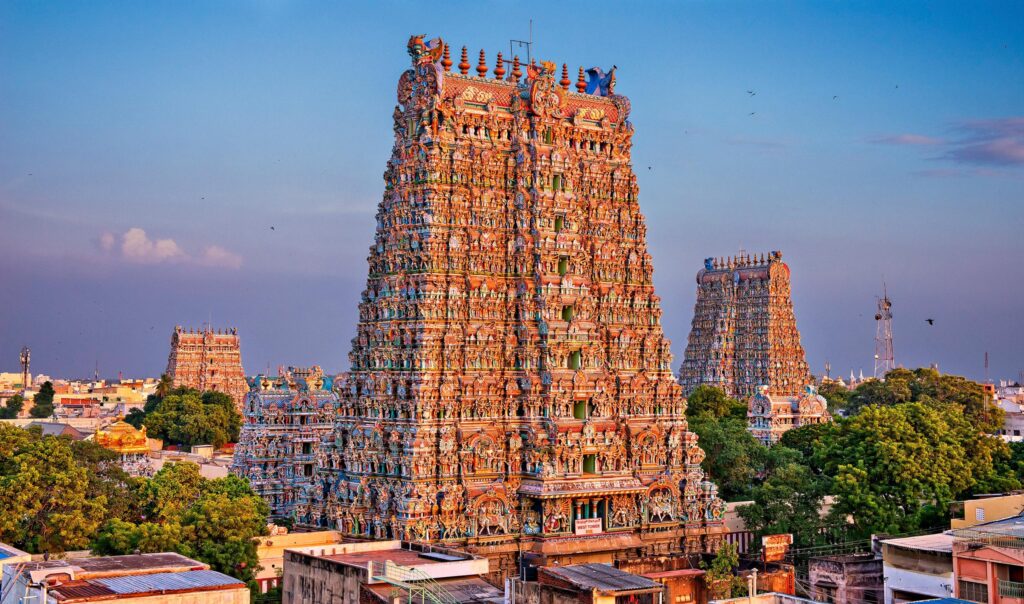
Historical Glimpse
The roots of the Meenakshi Temple go back nearly 2000 years, though the present structure was largely built during the Nayak dynasty in the 16th century. Madurai itself has been a cultural capital for more than two millennia, with the temple always at its center.
The temple was expanded and richly decorated under King Tirumalai Nayak, whose vision transformed it into one of the grandest temple complexes in India. Today, it stands not just as a monument of faith but also as an enduring symbol of South Indian temple architecture.
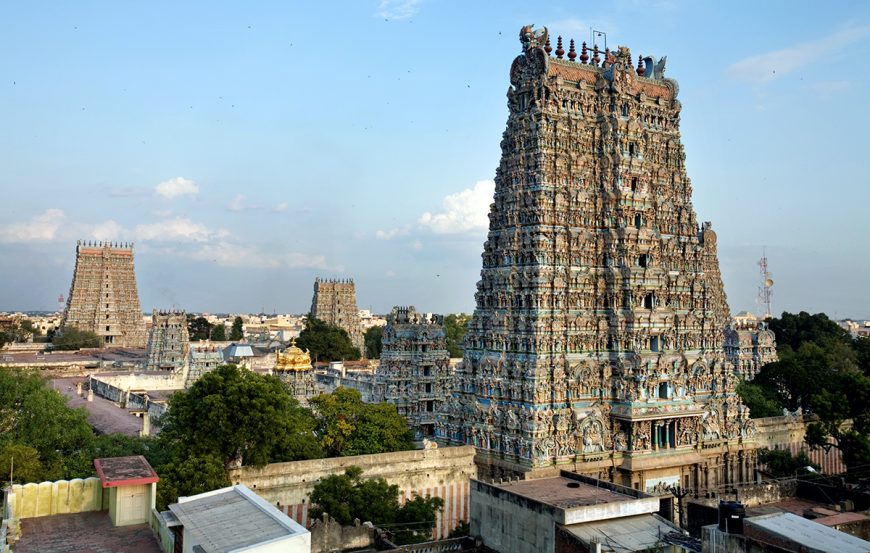
The Divine Story Behind the Temple
The temple is dedicated to Goddess Meenakshi, an incarnation of Goddess Parvati, and her consort Lord Sundareswarar, a form of Lord Shiva. The mythology says that Meenakshi was born with three breasts, and it was prophesied that the third would disappear when she met her future husband. This came true when she met Lord Shiva, who arrived in Madurai in the form of Sundareswarar.
Their divine marriage is still celebrated every year during the Chithirai Festival, one of the grandest festivals in Tamil Nadu, where the wedding of Meenakshi and Sundareswarar is reenacted with immense devotion and celebration.
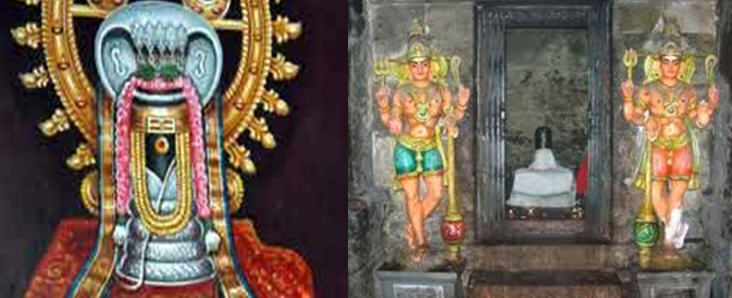
Legends That Breathe Life Into the Temple
The Meenakshi Temple is not just about stone and paint—it’s about the stories that echo through its halls. Beyond the goddess’s marriage to Lord Sundareswarar, countless legends make the temple feel alive.
One such story speaks of Indra, the king of gods, who was once cursed and came to Madurai to perform penance. It is said that he discovered a self-manifested lingam under a kadamba tree, which later became the core of the temple.
Another tale says that when Goddess Meenakshi was born, her destiny was tied not just to rule Madurai but also to unite with Lord Shiva. Their divine marriage, celebrated annually, represents the harmony of masculine and feminine energies, a balance central to Hindu philosophy.
These stories are not just recited—they are lived during festivals, dramatized in rituals, and celebrated in processions, making the temple not just a monument but a stage for mythology.
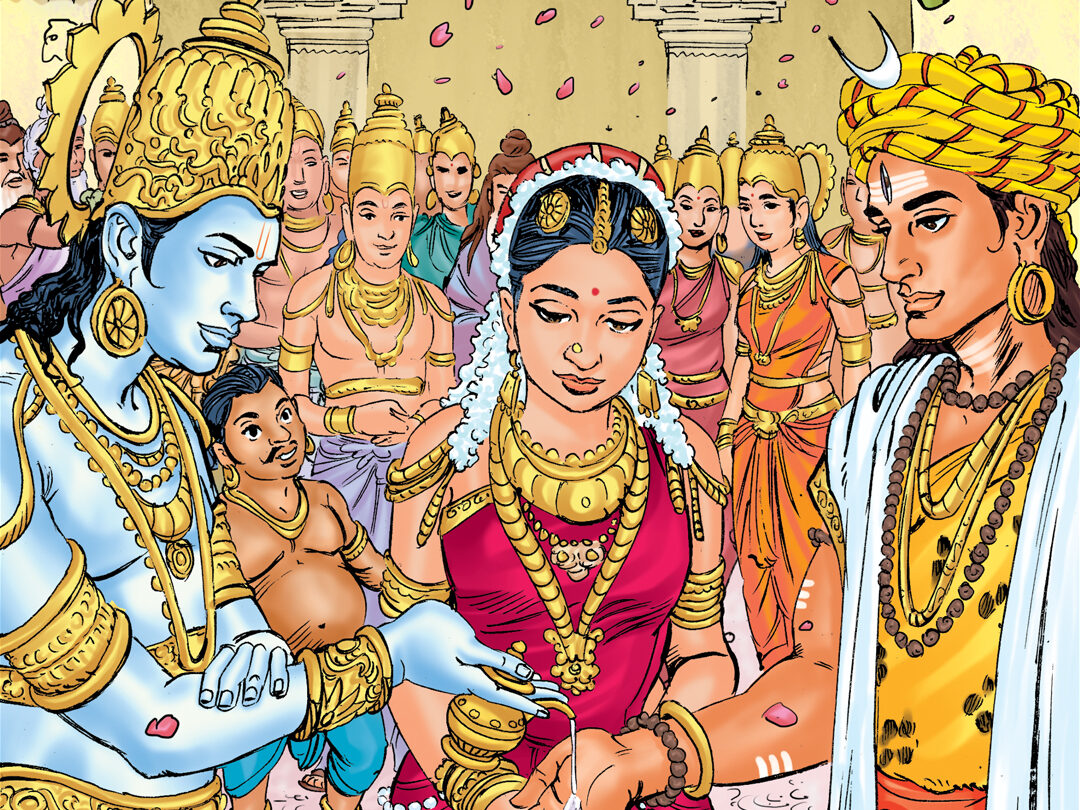
The Cultural Pulse of Madurai
If you want to understand Tamil culture, there’s no better place than the Meenakshi Temple. From dawn till night, the temple is a hub of activity. Devotees line up with offerings, priests chant ancient mantras, musicians play traditional instruments, and dancers sometimes perform in temple courtyards.
The temple is also closely tied to the Sangam tradition of Tamil literature. Ancient poets and scholars often referenced the temple in their works, cementing its role as both a spiritual and cultural beacon.
Even today, local life in Madurai revolves around the temple. The streets outside are filled with flower markets, handicraft stalls, and food vendors. Festivals celebrated inside spill into the city, transforming Madurai into one giant cultural stage.
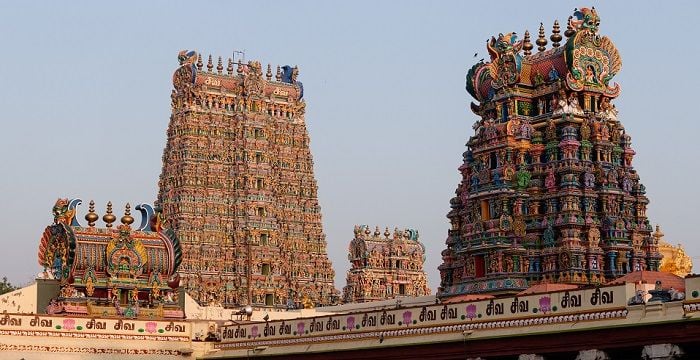
The Temple as a Living Museum
Every inch of the temple tells a story. If you pause and look closely at the pillars or ceilings, you’ll find mythological tales carved in stone or painted in vibrant colors.
- Celestial Sculptures: Deities, demons, dancers, and animals carved on the gopurams show the temple’s role as a storyteller.
- Murals: Many ceilings and walls carry colorful murals depicting epic tales from the Ramayana and Mahabharata.
- Musical Pillars: Some halls have pillars that produce different musical notes when struck, a testament to the genius of ancient artisans.
For an art lover, the temple is as captivating as any museum—but the difference is that it’s still alive, with rituals happening alongside centuries-old art.
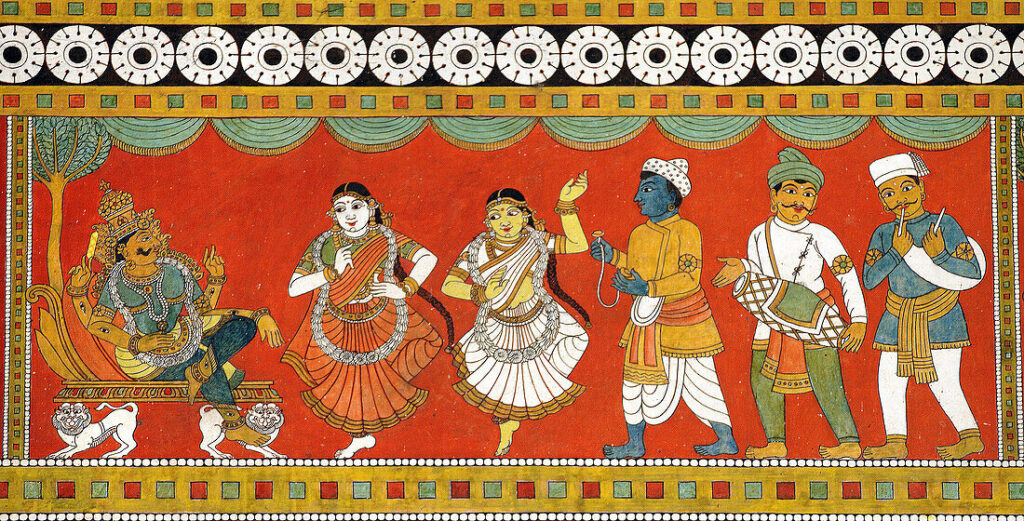
Practical Travel Tips
Planning a visit to Meenakshi Temple becomes smoother with a few insider tips:
- Best Time to Visit: The winter months from October to March are pleasant for travel. Summers in Madurai can be extremely hot.
- Temple Timings: The temple usually opens early in the morning and closes late at night, with breaks in the afternoon. Check timings before visiting.
- Dress Code: Modest clothing is expected; traditional Indian wear is ideal.
- Photography: Cameras are not allowed inside the main sanctum. Respect temple rules about photography in other areas.
- Footwear: Shoes are not allowed inside, so leave them at designated counters.
- Guided Tours: Hiring a local guide can enhance your experience by helping you understand the legends and details you might otherwise miss.
- Stay Options: Madurai has everything from budget lodges to luxury hotels, all within easy reach of the temple.
Why Meenakshi Temple Leaves a Mark
Visiting the Meenakshi Temple isn’t just about checking off a famous landmark. It’s about entering a world where faith, art, and daily life blend seamlessly. You see mothers whispering prayers for their children’s future, artists sketching the vibrant gopurams, and tourists marveling at the carvings—all under one roof.
What makes it stand out is how alive it feels. Unlike ruins or monuments preserved only for tourists, this temple continues to breathe with the devotion of millions, carrying forward traditions that are centuries old.
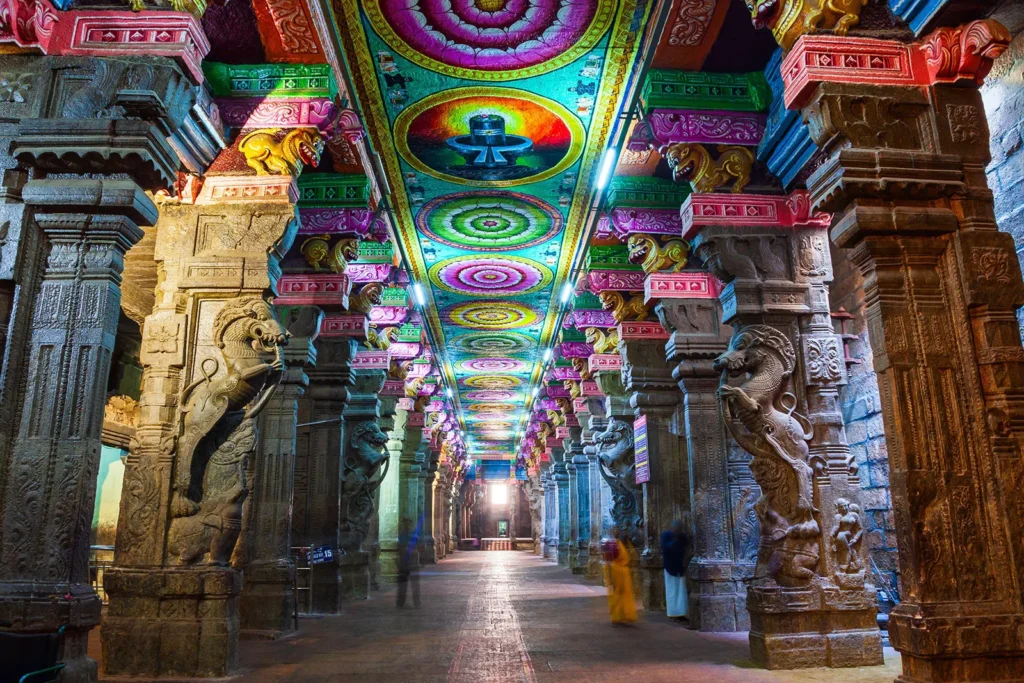
Festivals and Celebrations
The temple comes alive during festivals, making Madurai a city of lights, music, and joy.
1. Chithirai Festival
Held in April, this festival is the grand wedding of Goddess Meenakshi and Lord Sundareswarar. Thousands of devotees flock to Madurai to witness the celebrations, processions, and rituals.
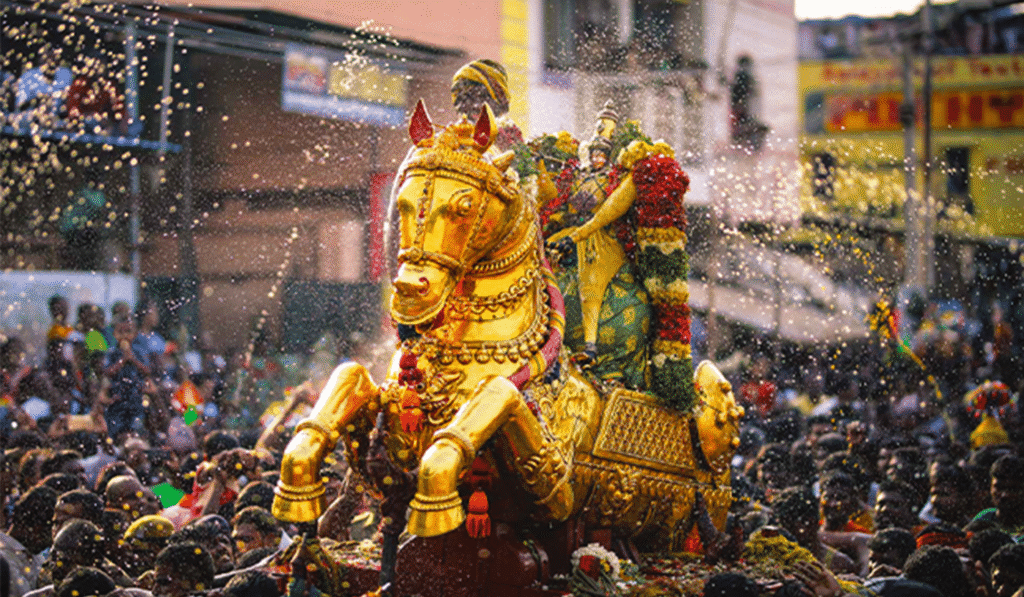
2. Float Festival
During this event, the deities are taken in grand procession and placed on a decorated float in the temple tank. The sight of the idols gliding on the water, illuminated by oil lamps, is enchanting.
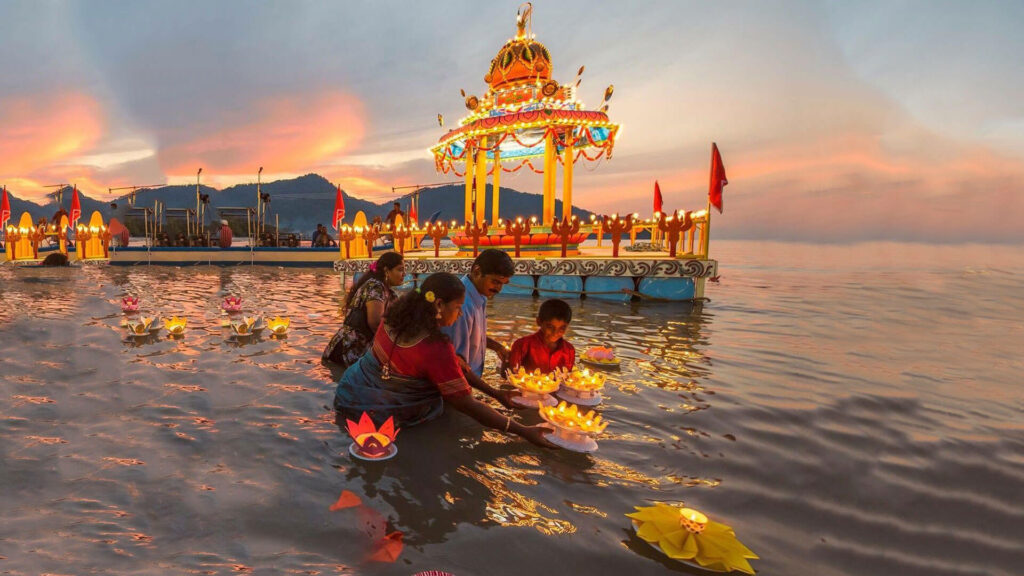
Like other parts of India, Navaratri is celebrated here with devotion and grandeur. The temple becomes a hub of dance, music, and rituals dedicated to the goddess.
Why Meenakshi Temple Is Unique
The Meenakshi Temple stands apart from other temples of India for many reasons:
- Living Culture: The temple is not a relic but a living, breathing part of daily life in Madurai. Markets, festivals, and rituals revolve around it.
- Focus on the Goddess: In most temples, the male deity is central, but here, Goddess Meenakshi holds equal—if not more—importance.
- Artistic Extravaganza: Every wall, pillar, and ceiling is filled with detailed artwork that tells stories of gods, kings, and legends.
- Blend of Myth and History: The temple seamlessly weaves mythology with real history, making it both a spiritual and cultural landmark.
Experience as a Visitor
Stepping into the temple is an overwhelming sensory experience. The air is filled with the smell of incense and flowers, chants echo through the halls, and the sight of towering gopurams leaves you in awe. As you walk through its corridors, you find yourself moving between sacred devotion and artistic wonder.
Visitors often spend hours simply gazing at the carvings, watching rituals, or sitting quietly by the Golden Lotus Tank, absorbing the temple’s serenity.
Nearby Attractions to Explore
A visit to Meenakshi Temple often extends into exploring the cultural wealth of Madurai and its surroundings.
1. Thirumalai Nayak Palace
Just a short distance from the temple lies this 17th-century palace built by King Thirumalai Nayak. Its grand pillars, domes, and light-and-sound shows transport visitors to an era of royal magnificence.
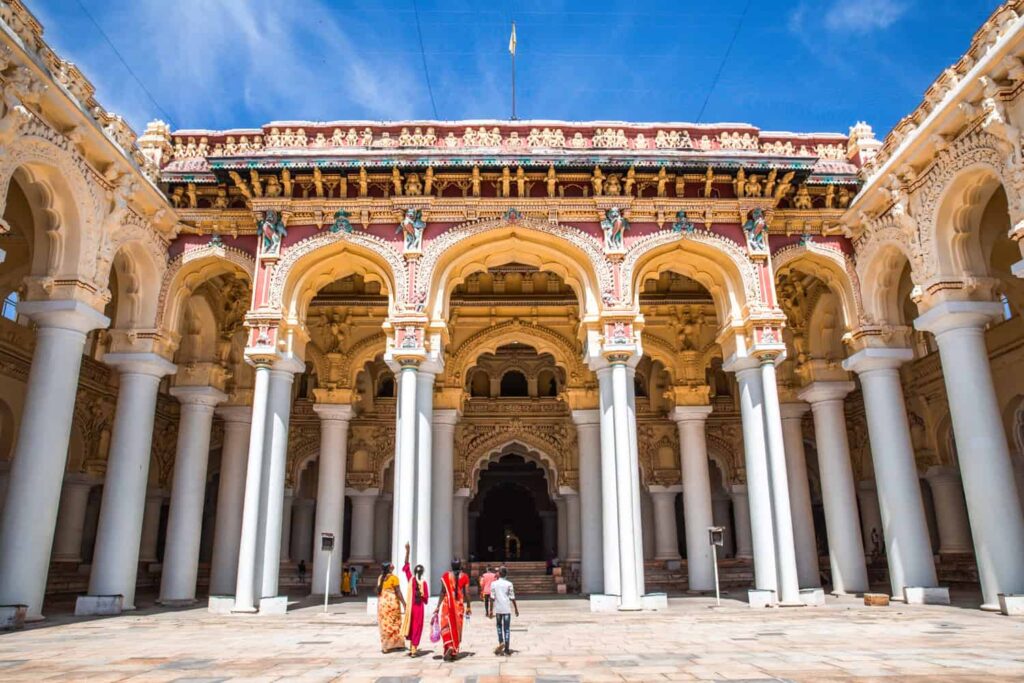
2. Gandhi Memorial Museum
For those interested in modern history, this museum is housed in a 17th-century palace and displays a collection of artifacts related to Mahatma Gandhi and India’s freedom struggle.
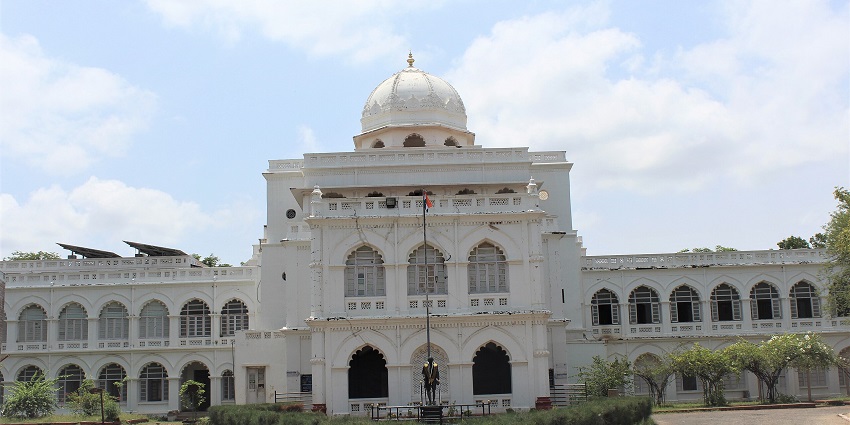
3. Alagar Kovil
Located about 20 km from Madurai, this temple dedicated to Lord Vishnu is set amidst picturesque hills and is known for its connection to Meenakshi’s marriage legend.

4. Pazhamudircholai
Another temple dedicated to Lord Murugan, located on a hilltop, is part of the six sacred abodes of Murugan in Tamil Nadu.
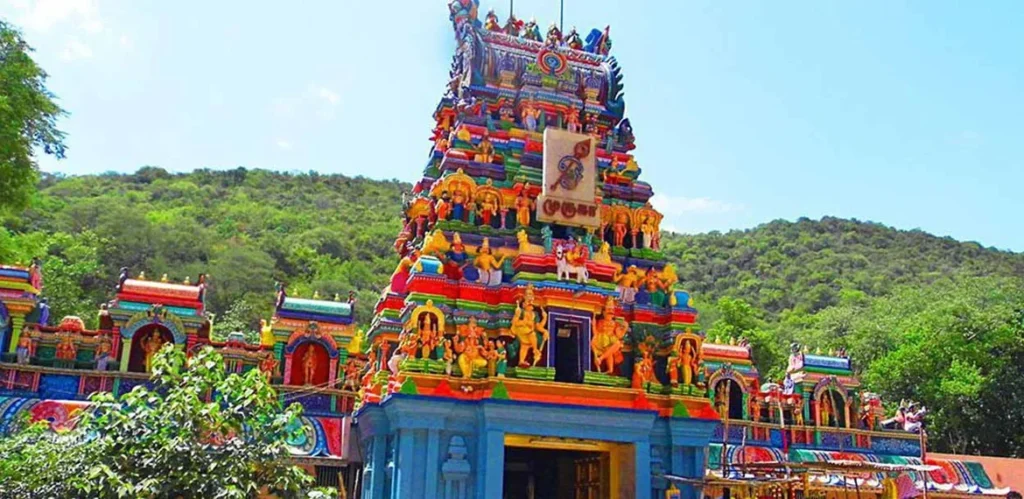
5. Local Bazaars
Right outside the temple, the vibrant markets of Madurai offer silk sarees, brass lamps, handicrafts, and jasmine flowers that the city is famous for.
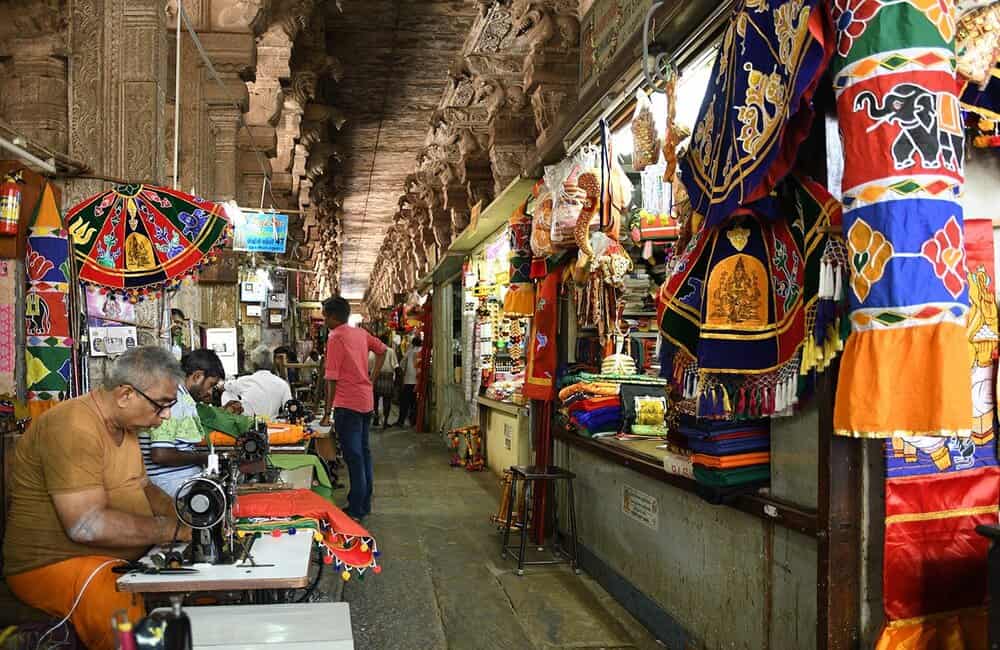
FAQ Section
Q1: What is the Meenakshi Temple famous for?
A: The Meenakshi Amman Temple in Madurai is famous for its stunning Dravidian architecture, towering gopurams, intricate carvings, and spiritual significance.
Q2: Who built the Meenakshi Temple in Madurai?
A: The original temple dates back to the 6th century CE, but most of its present structure was expanded during the Nayak dynasty in the 16th century.
Q3: Which deity is worshipped at Meenakshi Temple?
A: The temple is dedicated to Goddess Meenakshi (a form of Parvati) and her consort Lord Sundareswarar (Shiva).
Q4: How many gopurams are in Meenakshi Temple?
A: The temple has 14 gopurams (gateway towers), the tallest being the southern gopuram at 170 feet.
Q5: What are the temple timings?
A: The temple is open daily from 5:00 AM – 12:30 PM and 4:00 PM – 10:00 PM.
Q6: What is the Meenakshi Temple complex area?
A: The temple complex covers 45 acres and is one of the largest functioning Hindu temples in the world.
Q7: What festivals are celebrated in Meenakshi Temple?
A: The most famous festival is the Meenakshi Thirukalyanam (celestial wedding of Meenakshi and Sundareswarar) held in April–May.
Q8: What is the best time to visit Meenakshi Temple?
A: October to March is the best time, as the weather is pleasant for exploring Madurai.
Q9: How to reach Meenakshi Temple in Madurai?
A: The temple is in the heart of Madurai city. The nearest airport is Madurai Airport (12 km away), with good road and rail connectivity.
Q10: What are the nearby attractions to Meenakshi Temple?
A: Must-visit nearby places include:
- Thirumalai Nayakar Mahal
- Gandhi Memorial Museum
- Vandiyur Mariamman Teppakulam
- Alagar Kovil

